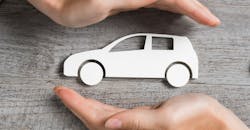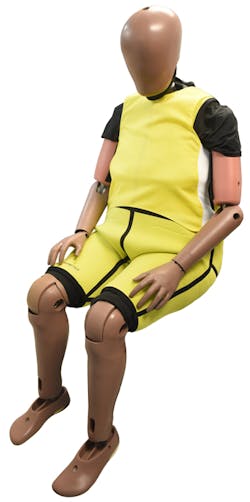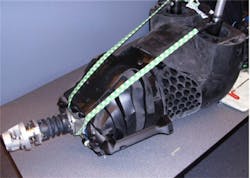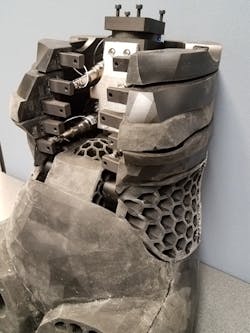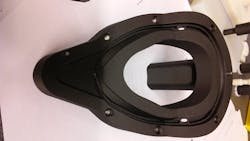This might come as a surprise, but we aren’t getting any younger. In addition, the average American has also gained about 20 pounds in the last 40 years. This can be a problem when developing accurate models of humans for automotive crash test experiments. Crash test dummies have been, and still are, a source of information on what happens to a body during a car accident. However, as the body changes, so must the models.
Without accurate models, safety equipment might not be able to keep people safe.
The crash test dummy has been used for over 50 years and is the gold standard for safety testing of automobiles. Organizations like the National Highway Traffic Safety Administration (NHTSA), the Insurance Institute for Highway Safety (IIHS), and other agencies throughout the world, continually update the requirements for driver and passenger protection. These updates require automakers to invest significant resources to ensure that their vehicles pass muster—and that the crash dummies they use in their cars realistically reflect what happens in the type of collisions these groups will be testing.
Generating a human model by hand is a custom, and lengthy process. Design engineer Kris Sullenberger from Humanetics, based in Huron, Ohio, was looking for a way to use plastic components to replace the elderly dummy’s steel ribcage assembly.
The traditional process creates the rib out of a piece of spring steel that is formed and heat treated. Then a piece of damping material is glued to the inside of the rib to control the response to impact. The rib is left to set, then tested, and the damping material is trimmed several times to achieve the desired performance. But the process is expensive and inconsistent; steel parts degrade over time, plastic and vinyl components are subject to hardening and shrinkage—and it all impacts the accuracy of the many sensors loaded onto a crash dummy.
Since Humanetics serves 100% of the OEMs and Tier I safety suppliers worldwide the accuracy of these anthropomorphic test devices (ATDs) is important. Realistically crash test dummies should reflect the full variety of human body types. Going beyond the first male-only dummies, the family has been expanded to include female, child, infant and, most recently, elderly bodies. And these last ones have turned out to be a unique challenge.
Research has shown that elderly occupants are more likely to sustain internal injuries during certain crash scenarios; bones are more fragile and soft tissues less robust. To reflect this, a new dummy captures the biofidelic nature of a 70-year-old female, 161 cm in height and 73 kg in weight—and is expected to have a significant impact on how the vehicle-safety community measures impact responses in crash events.
Crash test dummies are expensive and must be re-used multiple times, so vehicle makers tend to order them in small quantities. The idea of low volume made 3D printing a natural go to. However, Sullenberger tried 3D printing a plastic/rubber compound, but while the part matched many of the properties they were looking for, it wasn’t strong enough. “We 3D printed some ribs out of the plastic,” he says. “But after 20 hits, the ribs started to crack.”
An interior view of an elderly dummy structure. (Courtesy of Humanetics)
Sullenberger researched other solutions and reached out to Adaptive Corporation – an adaptive digital-to-physical product lifecycle company. It suggested they consider using Markforged’s Onyx, a carbon-composite material reinforced with continuous Kevlar fibers.
Crash dummy torso showing 3D-printed components. (Courtesy of Humanetics)
The material met Humanetics’ specifications. They ordered a complete set of ribs, put them on an elderly dummy and conducted 60-70 impacts with no visible deformation or damage. “We’ve inflicted over 150 impacts to those Markforged-produced ribs to date,” Sullenberger says. “And we haven’t broken a rib yet.”
“It’s my job to look at the future,” said Mike Beebe, Chief Technical Officer at Humanetics. “I’ve been in the ATD business for 38 years and I’m always trying to figure out what new processes and materials we should develop going forward. One of the major discoveries we’ve made recently was that we could 3D print much of the elderly dummy. Now all of the components of the new elderly dummy, from the pelvis to the head assembly, are additively manufactured.”
Savings
Manufacturing a set of ribs conventionally used to take two to three weeks. Now, Sullenberger’s team can print a single rib in twenty-four hours and a full set in a week.
Additionally, Beebe and Sullenberger found most of the more complex parts on the dummy are molded. Steel molds are expensive and take time to make. In comparison, they learned that a 3D-printed mold can be made in a day or two, saving between 40% and 60% in assembly and labor costs.
Thermoset mold for crash dummy part. (Courtesy of Humanetics)
Finding new ways to incorporate 3D printing into production will continue to expand. This non-traditional process helps keep companies flexible, efficient, and productive. More importantly, 3D printing is keeping people safe.
